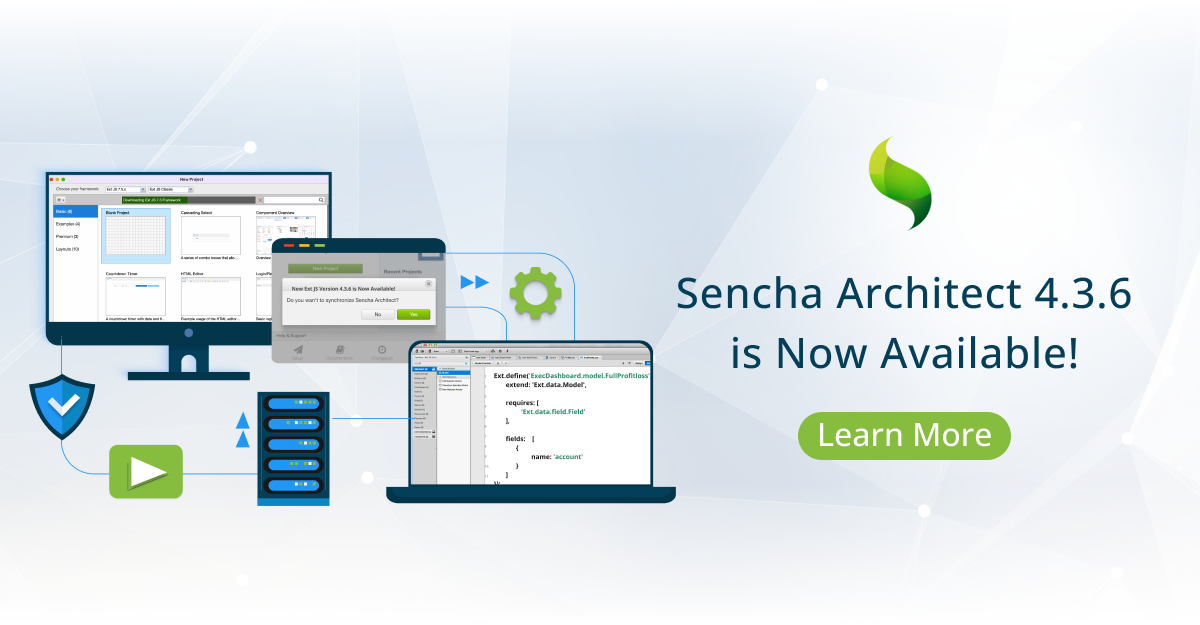Automating Unit Tests
One of the first questions I always hear when starting with a new client is “How can I build unit tests for my application?”
It’s obvious that many people understand the benefits of unit tests—developers want to minimize the number of bugs in their code and managers want to reduce the amount of time required to test an application before release. Although the concept of unit testing has existed for years, software teams are only now beginning to explore building tests for their Rich Internet Applications (RIAs).
In my experience, it’s obvious that most people don’t fully understand what it means to build unit tests for RIAs. Considering there are few tutorials explaining how to accomplish this, I wanted to share a recent experience with the community in hopes that it will stimulate ideas and discussion.
Keep an open mind as you follow along with this post and think about how these examples might fit into your own processes. This implementation is one of any number of possible solutions, and I don’t attempt to solve every problem. That being said, implementing unit tests into your project will produce cleaner, more stable code and will reinforce coding standards throughout your organization.
I. Unit Testing Web Applications: An Overview

In the diagram above, the “Presentation Layer” represents the user interface – which in the case of RIAs is frequently a JavaScript-driven DOM. This is the case for most Ext JS and Sencha Touch applications.
When building unit tests for RIAs, it’s important to remember that the user interface (the “presentation layer”) is very different from the supporting layers of the application.
The UI accepts random input from the user and is expected to look AND behave the same across many environments (which is both subjective AND objective). One language (JavaScript) performs multiple tasks (logic and presentation). Because its code is never compiled, syntax errors in JavaScript are often not discovered until runtime.
Thus developers more familiar with server-side unit tests often fail to realize the complexity involved in writing unit tests for JavaScript-driven applications. As a result, we cannot build unit tests for the presentation layer in the same way we would for the underlying data-driven tiers of an application.
Because the presentation layer has multiple responsibilities, it is important to separate unit tests into the following three areas:
- Syntax Checks – Syntax checks are not exactly unit tests because there is no logic being tested. Instead we analyze our code for syntactical errors – errors that may or may not be caught before application execution.
- Unit Tests – True to its contemporary meaning within software development, unit tests are a series of objective logic tests. Unit tests attempt to isolate small pieces of our code: given specific inputs, unit tests expect specific outputs. In this manner unit tests are essentially mathematical proofs (remember those from high school?) that confirm what our business logic is supposed to do.
- UI Tests (aka Integration Tests) – UI Tests are not the same as unit tests. UI Tests attempt to subjectively verify that elements on the screen behave (and/or look) as expected when a user performs a given action. There is no math or logic involved: the tests render the environment as a whole (containing all runtime dependencies) and wait to verify that the DOM has changed in a desired way. You can think of these tests as a robot manually testing the application.
I do not attempt to solve the problem of UI Tests in this post, but there are helpful links are included at the end if you’re interested.
II. A Sample Application
The key to implementing unit tests is to automate the process – if the tests aren’t run every time the code changes (or at some regular interval), the tests become ineffective and useless.
I have created a sample project that uses shell scripts to run each individual part (syntax checks and unit tests). These scripts return status codes upon success and failure.
The specific process to integrate these automated tests may be quite different at every company. The shell scripts might provide automation by:
- being integrated into a build process (e.g. via Ant)
- being integrated into source control hooks (e.g. a Git pre-commit hook on your local machine)
III. Pre-Requisites
The sample project (and the concepts explained below) assume a certain degree of knowledge on the following tools:
- Sencha SDK Tools (v2.0.0b3) – a suite of automation tools assisting with application creation, development and deployment
- PhantomJS (v1.4.1) – a headless WebKit browser controller via an easy JavaScript API
- JSLint (v2012-05-09) – a JavaScript code quality tool
- PhantomLint (v1.2.1) – an add-on to Phantom.js that automatically lints all JavaScript files in a project
- Jasmine (v1.2.0) – a behavior-driven development framework for testing JavaScript code
The shell scripts in the sample project were targeted towards Mac OSX/Linux users. However, Windows batch (.bat) files or Ant scripts can easily accomplish the same thing and should be easy to create.
Also, if you’re new to the world of unit testing I would highly recommend the book Test Driven JavaScript Development by Christian Johansen.
IV. Syntax Checks
While there are a variety of syntax-checking tools available for JavaScript, perhaps the most widely recognized is JSLint. Those of you familiar with the tool should remember that “JSLint will hurt your feelings” – it complains about everything! On the other hand, it is also highly configurable and helps our code be clean, stable and consistent.
Because JSLint is written in JavaScript, it is traditionally run in the browser on Douglass Crockford’s website (http://www.jslint.com). Although this manual process is sometimes convenient, it is difficult to run against multiple files and impossible to automate.
A better solution is to use PhantomJS – a headless WebKit browser that provides the web environment necessary to run JSLint and our own JavaScript code. Additionally, PhantomJS can access the filesystem; this allows us to execute multiple files against JSLint and report back some success or failure status.
To further simplify the process of checking all of our JavaScript files, I have incorporated a pet project of mine called PhantomLint which logs errors to an output file. In this way, a failure status can alert developers to take corrective action.
Taking a look in the sample project under /tests/, you should see a shell script named “run_lint.sh”. This script launches the PhantomJS environment and initializes PhantomLint for us (JSLint-Runner.js). Given its configuration options, PhantomLint then dives into the filesystem to test our code against JSLint. Any errors are then output to a text file.
If you run the shell script, you should notice a single error in our application code:
Line #: 37
Char #: 21
Reason: Unexpected ‘else’ after ‘return’.
In this case, JSLint tells us that we have a redundant “else” statement.
V. Unit Tests
There are a variety of JavaScript unit test frameworks currently available, and I chose Jasmine for this sample app. Why Jasmine? It is one of the more popular frameworks currently available, it has an active development community, and Sencha uses it internally to test our own code. Jasmine also has a very fluent API – this makes our test suite easy to understand. By nesting test conditions appropriately, we can build very powerful and descriptive test suites.
The tests can be run locally by visiting the “spec_runner.html” file under the /tests/ folder in one’s browser. The individual test files are located under the /tests/app/ directory.
Let’s start by looking at the class ChicagoMeetup.MeetupApiUtil. This class is ideal for unit testing because it has very few dependencies and doesn’t directly interact with the DOM; it is simply a collection of utility methods that perform logical operations.
Taking a look at the tests inside /tests/app/MeetupApiUtil.js you can see how the unit tests objectively analyze the methods for this class. Each test condition provides a specific input value and expects a specific output value.
describe(‘getUsersUrl() method’, function() {
it(‘should be a function’, function() {
expect(typeof ChicagoMeetup.MeetupApiUtil.getUsersUrl).toEqual(‘function’);
});
it(‘should return a string’, function() {
expect(typeof ChicagoMeetup.MeetupApiUtil.getUsersUrl()).toEqual(‘string’);
});
});
//etc…
});
The ChicagoMeetup.MeetupApiUtil class and the related unit tests are a terribly simple example – in fact there’s very little logic involved. More often than not, we want to build unit tests for custom components in our Sencha applications. How can we achieve this?
Consider the class ChicagoMeetup.view.Events in our sample application. This is a custom class, extended from Ext.grid.Panel, that contains some specific methods and behavior for our app.
In our test code (/tests/app/view/Events.js) we first create setup and teardown methods that provide fresh instances of our custom component for each test case. We do this to avoid polluting our test environment with abandoned objects and DOM elements.
//reusable scoped variable
var eventGrid = null;
//setup/teardown
beforeEach(function() {
//create a fresh grid for every test to avoid test pollution
eventGrid = Ext.create(‘ChicagoMeetup.view.Events’, {
renderTo : ‘test’ //see spec-runner.html to see where this is defined
});
});
afterEach(function() {
//destroy the grid after every test so we don’t pollute the environment
eventGrid.destroy();
});
it(‘should inherit from Ext.grid.Panel’, function() {
expect(eventGrid.isXType(‘grid’)).toEqual(true);
});
//etc…
});
It is important to note that we temporarily render our custom component to the DOM for each test (via the “renderTo” config). We do this in order to test any logic that might depend on the DOM – but the key is to destroy these components in-between tests so the greater test environment is not polluted (negatively affecting subsequent tests).
Although we are rendering the component to the DOM, I have to re-emphasize that we are not using Jasmine to build UI (or integration) tests. Jasmine doesn’t care what the components look like – our unit tests are only here to analyze the business logic.
Now that we understand how to properly unit test our components, the next step is automating this process. Similar to how we automated our syntax checks, we will again use PhantomJS to run our unit tests and output failure messages to a log file.
Taking a look in the sample project under /tests/, you should see a shell script named “run_jasmine.sh”. This script launches PhantomJS and initializes the Jasmine parser for us (Jasmine-Runner.js). After our tests have run, any test failures are output to a text file.
If you run the shell script, you should notice a single test failure:
Description:
– should return a string (HTML link snippet)
Failure Message:
– Expected ‘string’ to equal ‘function’.
In this case, Jasmine tells us that a test against linkRenderer() failed. We expected that this method would return a function, but our test case encountered a string. This particular example fails because the spec incorrectly expected “function” – which demonstrates that unit tests can contain errors themselves!
it(‘should return a string (HTML link snippet)’, function() {
var testUrl = ‘https://staging.sencha.com’;
expect(typeof eventGrid.linkRenderer).toEqual(‘function’);
expect(typeof eventGrid.linkRenderer(testUrl)).toEqual(‘function’); //THIS SHOULD FAIL! We should have written toEqual(‘string’)
//TODO: more robust regular expression checks to ensure this is *actually* an HTML link tag, correctly formatted
});
});
It is unrealistic and nearly impossible to achieve 100% code coverage. Because unit tests are designed to test small pieces of code in isolation, it becomes very difficult to write good tests for pieces with many dependencies or major DOM interactions. Try to focus on problem areas or base classes, and write tests that check for bugs as they pop up (to prevent regressions).
VI. UI Tests
As I mentioned earlier, I am not attempting to solve the problem of UI Tests in this post. Testing the look and the complex interactions of an application is a humongous task, and is a topic better suited for its own dedicated tutorial.
That being said, here are some of my thoughts on accomplishing UI Tests:
- Building UI tests for dynamic RIA’s is sufficiently difficult because the DOM is always changing in unpredictable ways. Tools like Selenium use XPATH or CSS selectors to verify “success” – but because the DOM is unpredictable, the tests written for these tools become very brittle. Thus maintaining your tests often takes more time than creating new features.
- Many prominent UI developers prefer to use “specification” rather than “UI tests” for exactly these reasons. A good resource for you is the book “Specification by Example”, in which tools like Cucumber are recommended.
- Siesta is becoming a more popular tool for automated UI testing and is certainly worth a look.
VII. Conclusion
Unit tests are an important part of the software development process. By clearly defining what we expect from our code, unit tests allow us to develop a high degree of confidence that our applications will function as intended. Automating our unit tests reduces the number of bugs and decreases the amount of time we need to spend manually testing our code.
Take a look at the sample project on GitHub and consider how this solution might integrate with your own processes. This post is meant to foster ideas and discussion within the community – so please chime in with questions, comments and solutions of your own! Feel free to fork the sample project and add or edit the examples!

We’re excited to announce the official release of Rapid Ext JS 1.0, a revolutionary low-code…

The Sencha team is pleased to announce the availability of Sencha Architect version 4.3.6. Building…

Sencha, a leader in JavaScript developer tools for building cross-platform and enterprise web applications, is…












